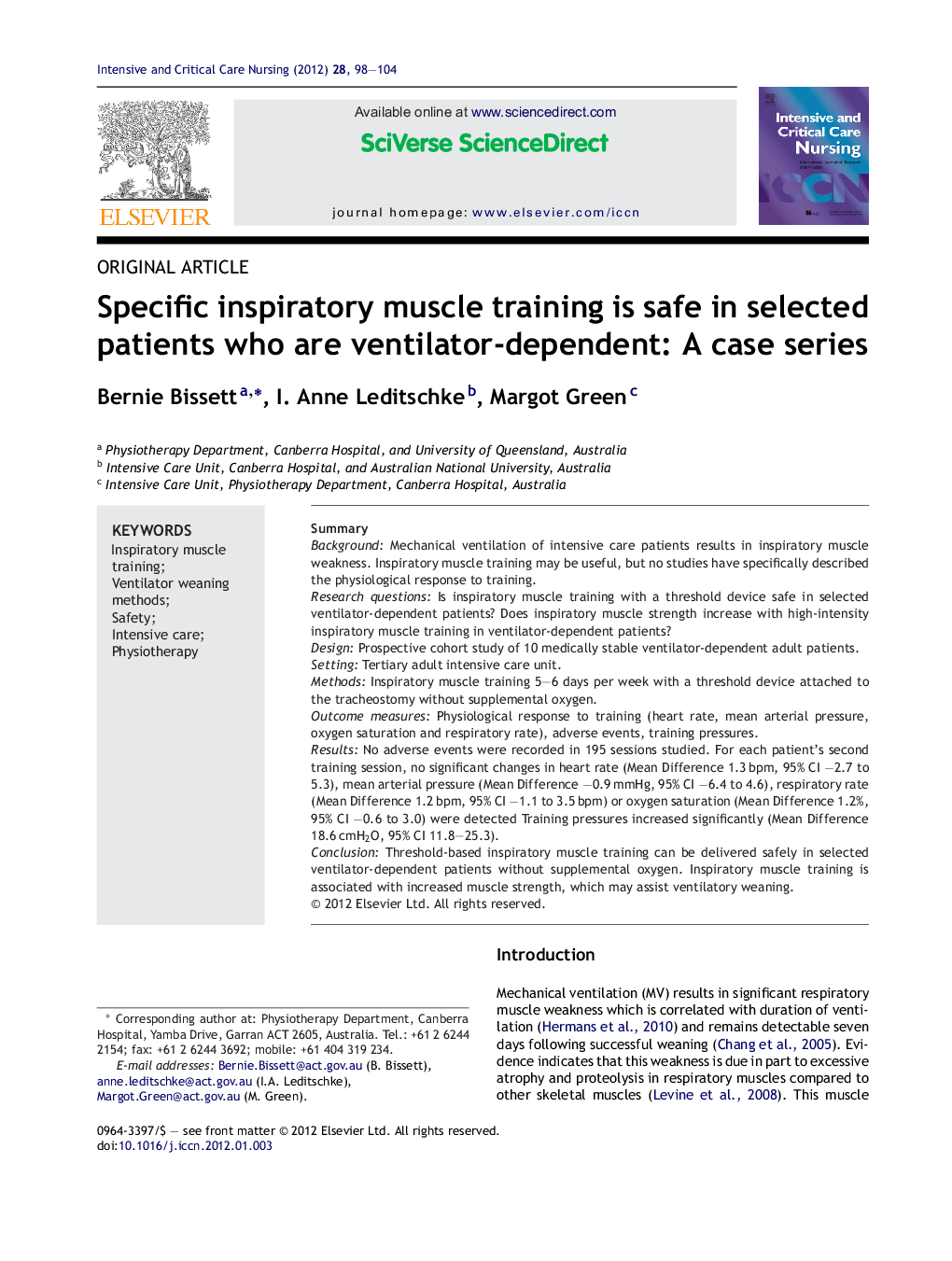| Article ID | Journal | Published Year | Pages | File Type |
|---|---|---|---|---|
| 2653163 | Intensive and Critical Care Nursing | 2012 | 7 Pages |
SummaryBackgroundMechanical ventilation of intensive care patients results in inspiratory muscle weakness. Inspiratory muscle training may be useful, but no studies have specifically described the physiological response to training.Research questionsIs inspiratory muscle training with a threshold device safe in selected ventilator-dependent patients? Does inspiratory muscle strength increase with high-intensity inspiratory muscle training in ventilator-dependent patients?DesignProspective cohort study of 10 medically stable ventilator-dependent adult patients.SettingTertiary adult intensive care unit.MethodsInspiratory muscle training 5–6 days per week with a threshold device attached to the tracheostomy without supplemental oxygen.Outcome measuresPhysiological response to training (heart rate, mean arterial pressure, oxygen saturation and respiratory rate), adverse events, training pressures.ResultsNo adverse events were recorded in 195 sessions studied. For each patient's second training session, no significant changes in heart rate (Mean Difference 1.3 bpm, 95% CI −2.7 to 5.3), mean arterial pressure (Mean Difference −0.9 mmHg, 95% CI −6.4 to 4.6), respiratory rate (Mean Difference 1.2 bpm, 95% CI −1.1 to 3.5 bpm) or oxygen saturation (Mean Difference 1.2%, 95% CI −0.6 to 3.0) were detected Training pressures increased significantly (Mean Difference 18.6 cmH2O, 95% CI 11.8–25.3).ConclusionThreshold-based inspiratory muscle training can be delivered safely in selected ventilator-dependent patients without supplemental oxygen. Inspiratory muscle training is associated with increased muscle strength, which may assist ventilatory weaning.
